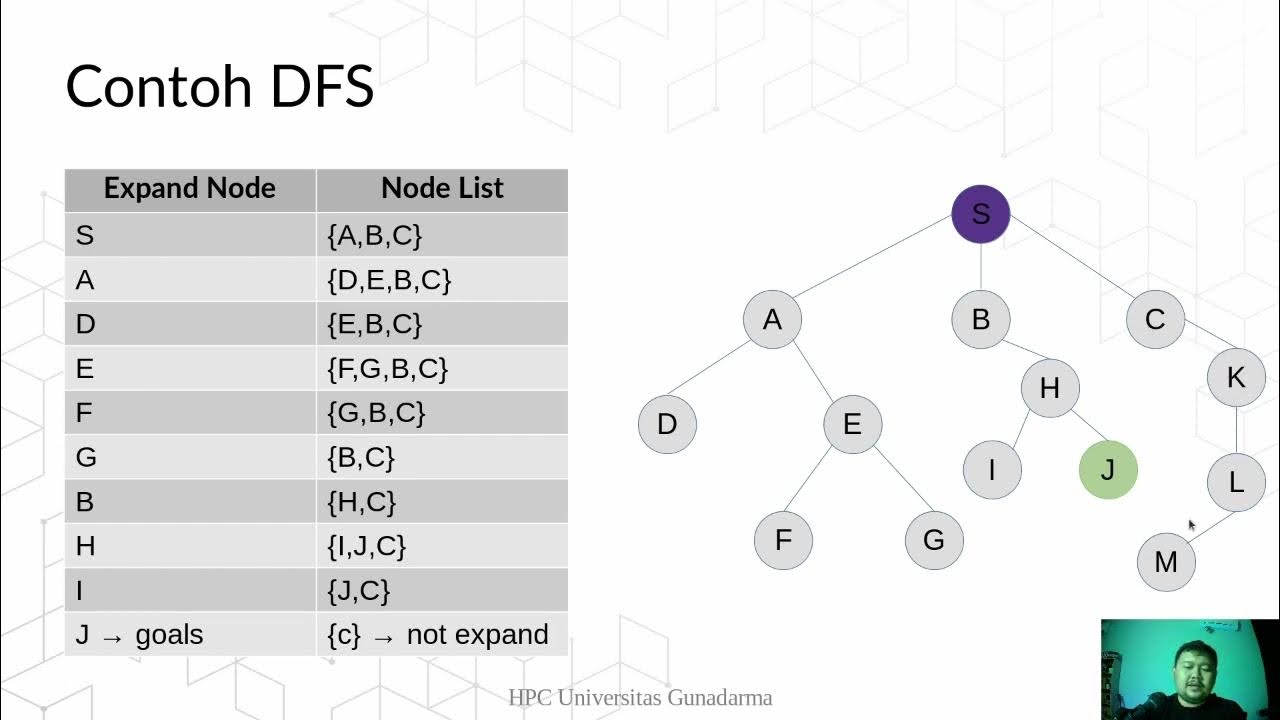Beam Search Algorithm in Artificial Intelligence | All Imp Points | Heuristic Search Techniques
Summary
TLDRThis video provides an in-depth explanation of the Beam Search algorithm, focusing on its importance in managing space complexity compared to the Best First Search algorithm. It highlights how Beam Search narrows down the best options by selecting only a limited number of nodes based on a 'beam width' or 'beta value,' enhancing efficiency. The tutorial also emphasizes key differences, like Beam Search’s potential incompleteness, and introduces related topics such as heuristic values, sorting techniques, and space complexity optimization. The video concludes with a teaser for the next topic, the Hill Climbing algorithm.
Takeaways
- 🤖 Beam search algorithm is a variation of best first search, which focuses on improving space complexity.
- 🧠 Both best first search and beam search are heuristic-based algorithms, helping choose the best path toward the goal state.
- 🔍 Beam search differs from best first search by limiting the number of nodes it keeps in memory, based on a specified beam width (Beta).
- 📉 The beam width (Beta) controls how many of the best nodes are kept, pruning the others to improve efficiency.
- 🧮 Best first search keeps all nodes in memory and sorts them, leading to higher space complexity, while beam search only keeps the best nodes.
- ⏳ Beam search improves space complexity, making it constant due to pruning unnecessary nodes.
- 📊 Sorting methods like merge sort or quick sort are used in beam search, with fewer elements leading to faster sorting.
- 🚧 Beam search sacrifices completeness, as it might prune the optimal path, leading to a potential dead end.
- 🚀 Beam search is faster but might not always provide the optimal solution, as it limits exploration.
- ⛰️ When the beam width is reduced to 1, the beam search algorithm becomes similar to the hill climbing method.
Q & A
What is the primary focus of the beam search algorithm?
-The primary focus of the beam search algorithm is to optimize space complexity by limiting the number of nodes kept in memory, using a beam value to retain only the best nodes at each level.
How is beam search different from best first search?
-Beam search is a variation of best first search. While best first search keeps all nodes in memory and sorts them, beam search limits the number of nodes using a beam value, pruning less optimal nodes to save space.
What is the heuristic value, and how is it used in these search algorithms?
-The heuristic value is an estimated cost from the current node to the goal state. Both beam search and best first search use this value to prioritize nodes, choosing the paths with lower heuristic values for further exploration.
What is the role of the beam width (or beta) in beam search?
-The beam width (or beta) determines how many nodes are retained at each level during the search. For example, if the beam width is 2, the algorithm keeps only the two best nodes based on their heuristic values, discarding the rest.
How does beam search help improve space complexity?
-Beam search improves space complexity by pruning less optimal nodes based on the beam value, keeping only a limited number of nodes in memory. This reduces the overall space required compared to storing all nodes, as in best first search.
Why is beam search not considered a complete algorithm?
-Beam search is not considered a complete algorithm because it prunes nodes based on the beam value. This pruning can lead to removing paths that may later prove optimal, potentially leading to dead ends and missing the best solution.
What happens if the beam value is set to 1?
-If the beam value is set to 1, beam search becomes the hill climbing method. In this case, only the single best node is kept at each level, making the search highly greedy but potentially missing optimal solutions.
How does the time complexity of beam search compare to best first search?
-Beam search reduces the time spent on sorting nodes because fewer nodes are retained in memory. While best first search must sort all explored nodes, beam search sorts only a limited set of nodes, making it more time-efficient in some cases.
What is the trade-off when using beam search compared to best first search?
-The trade-off with beam search is that while it reduces space and time complexity by pruning nodes, it may miss the optimal path due to its incomplete nature. Best first search, on the other hand, explores all paths but at a higher cost in memory and time.
Can beam search provide an optimal solution every time?
-No, beam search does not guarantee an optimal solution every time. Since it prunes nodes, it might discard the optimal path early in the search, leading to suboptimal results in certain cases.
Outlines

This section is available to paid users only. Please upgrade to access this part.
Upgrade NowMindmap

This section is available to paid users only. Please upgrade to access this part.
Upgrade NowKeywords

This section is available to paid users only. Please upgrade to access this part.
Upgrade NowHighlights

This section is available to paid users only. Please upgrade to access this part.
Upgrade NowTranscripts

This section is available to paid users only. Please upgrade to access this part.
Upgrade Now5.0 / 5 (0 votes)





